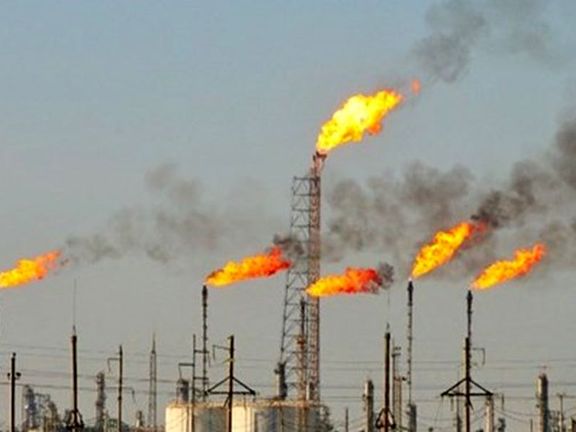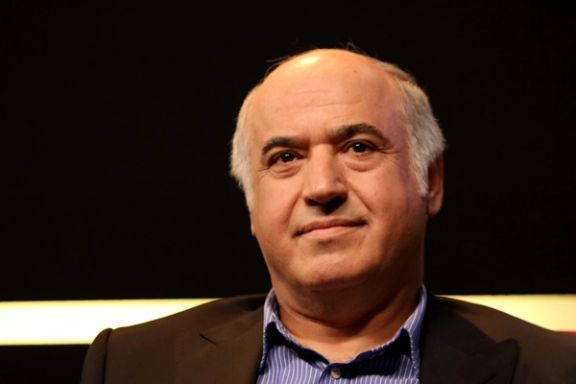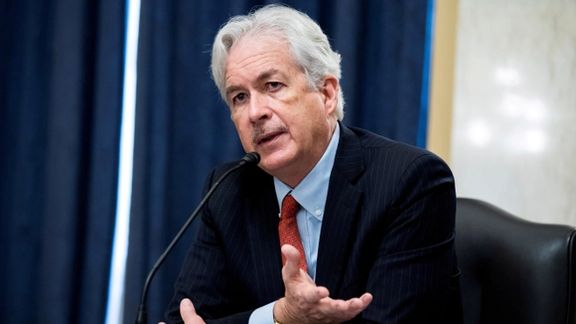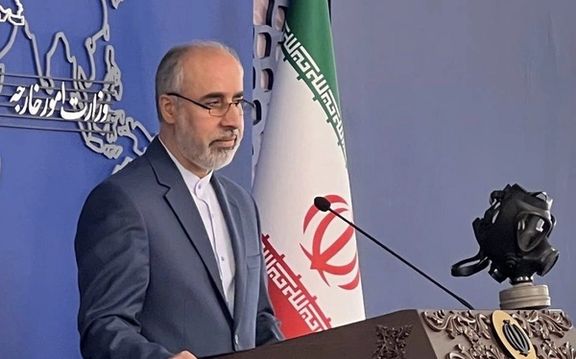One-Fourth Of Iran’s Energy Wasted During Production: MP

A high-ranking member of Iranian parliament says that currently almost one fourth of the energy produced in the country is being wasted.

A high-ranking member of Iranian parliament says that currently almost one fourth of the energy produced in the country is being wasted.
Malek Shariati, the spokesman for the parliament energy committee said Sunday that 23% of the energy produced in Iran is lost due to technical gaps.
The latest report by the World Bank shows that the intensity of energy consumption in Iran in 2019 was four times more than the European Union.
Earlier, Mohsen Delaviz, a former CEO of Iran’s Fuel Consumption Optimization Organization had announced that 40% of the energy consumed in the country is wasted without reaching consumers.
A major part of Iran’s energy waste is in the production and transmission of natural gas, as well as the conversion of fossil energy into electricity.
Based on the World Bank figures, every year 18 billion cubic meters of gas is burned and wasted only in the production phase due to lack gas collection equipment. Almost nine billion cubic meters of gas is lost in the worn-out transmission and distribution network per year.
Iran's thermal power stations consume 70 billion cubic meters of gas and 20 billion liters of fuel oil and diesel annually while the average efficiency of thermal power plants in the country is about 37%.
On the other hand, official statistics released by the ministry of energy show that 13% of the electricity produced in the country is wasted in the transmission and distribution phases due to worn-out equipment.

The municipality of the Iranian capital Tehran has in a move supported vandalizing the British embassy after anti-UK slogans were painted on its walls.
This comes a few days after a group of Iranian citizens voluntarily helped paint the walls of the British embassy vandalized with anti-UK slogans.
Tehran municipality, headed by a hardliner mayor, has installed banners near the embassy in the downtown bearing the sentence, “Shame cannot be erased with paint.”
The slogans had been apparently sprayed by some pro-regime elements to protest UK’s support for anti-government protesters in Iran.
Britain summoned Iran's most senior diplomat in London on December 9 to protest the hanging of Mohsen Shekari, the first protester to be executed.
British envoy to Tehran Simon Shercliff in a tweet on Thursday thanked Iranians and international friends from Germany, South Korea, France, Italy, Brazil and some other countries who sympathized with the UK.
Photos on social media show that Shercliff himself wass also helping people to paint the walls.
This was not the first time the UK embassy is vandalized by pro-regime hardliners. In 2011, the embassy was attacked by a mob of Basij militia and hardliner activists who ransacked offices and stole documents. One small building was also set on fire during the incident and several people were injured.
It came after the UK strongly supported punitive international sanctions over Iran's nuclear program and followed a vote in the Iranian parliament to downgrade ties with Britain and in effect expel the UK ambassador.

As Iran’s central bank chief partly blamed political unrest for the national currency’s unprecedented fall, economists express profound doubt about any solution.
Iran’s rial was hovering near 400,000 against the US dollar on Sunday, while in most of 2021 the rial was stable at around 250,000, a more than 50-percent drop in 15 months, which coincides with the presidency of hardliner Ebrahim Raisi.
The head of the Central Bank of Iran (CBI), Ali Salehabadi said in addition to US sanctions on Iran, recent popular protests have encouraged capital flight from the country and contributed to the fall of the rial. But he promised to reduce the alarming growth in the money supply until March, when the Iranian calendar year ends.
He also claimed that the current 50-percent annual inflation rate will decrease after March 2023, without offering a roadmap, except his promise to control the money supply.
Bahaoldin Hosseini-Hashemi, an economist in Tehran, expressed bewilderment at these remarks, telling a local website that the closing months of the year is usually when more money is printed by the CBI, because the government has to pay its obligations.

The central bank in Iran enjoys little independence from the executive branch, or the whims of powerful circles such as the Revolutionary Guard and many economic entities linked to prominent clerics and their “charitable” organizations.
Hosseini-Hashemi drew attention to official reports showing that the CBI has printed money at a faster pace since the end of September as government debt to the bank has increased. A second challenge is presented by state or quasi-state banks, which also rely on borrowing from the CBI.
“Our money supply growth rate has reached an unprecedented level…it is a machine that just creates more liquidity and inflation,” the economist said. He added that the optimism expressed by the CBI chief will be tested when it comes to the government budget, but it is a fact that the deficit is higher than in other year.
Therefore, it is not clear what Salehabadi is basing his optimism on. Tax revenues have not increased either, and in the current crisis there is no outlook for higher tax revenues.
The economist, like many of his peers in Iran, sees the only solution to control or ameliorate the crisis lies in a foreign policy change. Oil export and banking sanctions imposed by the United States over Iran’s nuclear program must end. This is prerequisite to any chance of stopping current negative trends.
He also pointed out that Iran has a problem with the demands made by the international financial watchdog, the FATF since 2017, to enact legislation against money laundering and financing of terrorism. Without this, Iran will remain blacklisted by many international financial institutions.
Hosseini-Hashemi said in his interview that contrary to what Salehabadi promised, he believes things will get worse in the coming months. Both the pace in money supply and inflation will increase, judging by current indicators. “Maybe it is possible to make these statements on paper, but what we can see in the statistics, the reality is just the opposite…When they [officials] say that they have written a plan and held meetings, it means they have nothing to count on.”

CIA Director William Burns has spoken of a nascent Tehran-Moscow defense partnership just as the US faces “major-power competition with China and Russia.”
With Burns a former ambassador to Russia and as Deputy Secretary of State a key player in behind-the-scenes talks that led to the 2015 Iran nuclear agreement, many expected President Joe Biden to assign Burns a diplomatic post. His appointment to head the Central Intelligence Agency raised some eyebrows in Washington.
Two years into the job, Burns Friday gave an interview to PBS where he expressed pride in the CIA’s work at a “moment of profound transformation on the international landscape.” A revolution in technology was “transforming…the way the intelligence profession works,” he said, while emphasizing “the rise of major power competition with China and with Russia.”
Burns argued that Iran’s supply of military drones to Russia marked “at least the beginnings of a full-fledged defense partnership… with the Russians beginning to look at ways in which, technologically or technically, they can support the Iranians.” This, he said, could “have an even more dangerous impact on the Middle East [than in Ukraine] …if it continues.” Without elaborating, or being asked to, Burns added that the US took the matter “very, very seriously.”
The Ukraine war, he argued, was exposing Russian weaknesses, for example in its troop mobilization and inability to match the weapons being supplied to Ukraine. Some Washington analysts have highlighted as ‘good news’ evidence of ships travelling from Iran to Russia turning off tracking devices to hide shipments – ‘good news’ in the sense it signals the success in the US strategy of eroding Russia’s military capacity.

But Burns acknowledged the consequences of the war and sanctions not just on Moscow’s war effort but within Russia itself. The Russian economy has suffered long-term damage,” he said. “Most of the progress that the Russian middle class has made over the last 30 years is being destroyed.”
CIA ‘struck’ by Iran protests
Turning to Iran, Burns said CIA analysts had been “struck” at “the duration and scope of current protests,” which reflected “a growing number of Iranians… fed up with economic decay, with corruption, with the social restrictions that especially affect Iranian women.”
Protests have slowed economic growth as Iran struggles in the fifth year of US ‘maximum pressure sanctions with 40 percent inflation and the authorities expanding money supply to meet a fiscal challenge. But Burns did not express the view, or hope, held by some US conservatives, that this would lead soon to dramatic political change.
“I don’t think the Iranian regime perceives an immediate threat to its grip,” he said. “It still has some very practiced habits of repression and brutality that it’s continuing to employ.”
The diplomat in Burns resurfaced as he acknowledged China’s “reluctance” to supply weapons requested by Russia, and of both Chinese President Xi Jinping and India’s Prime Minister Narendra Modi in “raising their concerns about use of nuclear weapons.” But this did not distract the CIA director from his main concern. “We have no higher priority at CIA,” he said, “than not just Taiwan, but the longer-term geopolitical challenge that Xi’s China poses.”

Iran on Saturday dismissed a UN General Assembly resolution against its human rights violations, calling it “hypocritical and devoid of legitimacy."
Foreign Ministry Spokesman Nasser Kanaani said in a statement Friday “The hypocritical approach of sponsors of this resolution in exploiting international institutes to exert pressure on the Islamic Republic of Iran is a clear example of abusing sublime human rights concepts and values to pursue short-sighted political objectives.”
The United Nations General Assembly adopted a series of resolutions on December 15, with one condemning serious rights violations by Iran.
The resolution titled, “Situation of human rights in the Islamic Republic of Iran” passed by a recorded vote of 80 in favor and 29 against, with 65 abstentions.
Iran’s spokesman reiterated claims that this is part of the efforts of Western countries to maintain the “Iranophobia project” and “psychological war” against the Islamic Republic.
Meanwhile, several Iranian Friday Imams called the United Nations a “victim” of goals pursued by the United Sates in their sermons on Friday.
The resolution expressed serious concern at the significant increase in use of the death penalty in Iran; disproportionate application of the death penalty to persons belonging to minorities; and continuing disregard for protections under Iranian law or internationally recognized safeguards relating to the death penalty.
It strongly urged Iran to eliminate all forms of systemic discrimination and other human rights violations against women and girls; ensure women’s and girls’ equal protection and access to justice, including by prohibiting so-called honor killings and child, early and forced marriage.

The resolution further called on the regime to lift restrictions on women’s and girls’ equal access to primary and secondary education; and remove legal and cultural barriers to women’s equal participation in the labor market and all aspects of economic, cultural, and political life.
The Assembly also expressed serious concern that the enforcement of the hijab and chastity law and its violent implementation by the Iranian morality police fundamentally undermines the human rights of women and girls.
It strongly urged Iran to cease the use of excessive force against peaceful protestors, such as in the aftermath of Mahsa Amini’s arbitrary arrest and subsequent death while in custody.
Further, it called on Iran to eliminate all forms of discrimination based on thought, religion, or belief, reiterating the importance of independent investigations for all allegations of human rights violations, including excessive use of force, arbitrary arrest, detention and torture.
The Assembly also called on Iran to cooperate fully with the Special Rapporteur on human rights in Iran, including by accepting repeated requests to visit the country.
The new draft resolution comes just days after the Islamic Republic was voted out from the United Nations Commission on the Status of Women (CSW) for policies contrary to the rights of women and girls.
On Wednesday, members of the UN Economic and Social Council (ECOSOC) adopted a US-drafted resolution to "remove with immediate effect the Islamic Republic of Iran from the Commission on the Status of Women for the remainder of its 2022-2026 term" over the regime’s bloody crackdown on protests ignited by the death of a young woman in custody of hijab – or the so-called “morality” -- police.
The Commission on the Status of Women (CSW) is the principal global intergovernmental body exclusively dedicated to the promotion of gender equality and the empowerment of women.
Out of the 54-member body, 29 members voted in favor of the resolution while eight voted against and 16 countries abstained. The Islamic Republic itself, Palestine, Syria, Cuba, China, Russia, Eritrea, Belarus, Zimbabwe, and North Korea voted to keep Iran in the body.
The vote was the first time in United Nations history that a country was expelled from the commission.

Popular anti-regime protests in Iran have reawakened expectations in the United States of a pro-American, ‘postmodern’ future in the Middle East.
In an article published by Bloomberg December 15, headlined ‘A Democratic Iran is Coming and it will lead the Middle East,’ Robert Kaplan suggests that “nothing has the potential to change the region as much as a more liberal regime” in Iran.
Named by Foreign Policy magazine in 2011 and 2012 as ‘one of the top 100 global thinkers,’ Kaplan supported the 2003 US-led Iraq invasion on the basis that it would unleash what he told NPR in October 2002 was a “secular, urbanized developed tradition”. However, he was not alone in that optimistic assessment. Most of the US Congress and media were also believers in removing Saddam Hussein from power.
Unlike many Arab countries, Kaplan argues, Iran’s borders are not “artificial…drawn by Europeans.” This, he claims, Iran shares with the Persian Gulf emirates and kingdoms – although Saudi Arabia dates only to 1932.
Whatever his views about ‘democracy’ or ‘liberalism,’ Kaplan is firmly a realist. He notes “Saudi Arabia may understandably offend Western humanitarians” and expects the US to broker a future Iranian ‘normalization’ with Israel.
Noting Iran’s rich energy reserves, currently hemmed in by US ‘maximum pressure’ sanctions, Kaplan admires the doyen of the realist school, the US Secretary of State who saw Iran’s Pahlavi shah as a US ally against adversaries Iraq and the Soviet Union.
“Henry Kissinger told me that had the Pahlavi dynasty remained in power, Iran, given its strong state and civilizational richness,” Kaplan writes, “would have evolved into a constitutional monarchy with an economy comparable to South Korea’s.”
Kaplan’s commitment to real politic rather than ‘humanitarianism’ opens him to the possibility of a “post-clerical” Iran asserting itself regionally, perhaps “developing even stronger ties” with China than “Germany now has.” And Kaplan is also aware that a “somewhat chaotic, less centrally controlled” Iran might grapple with “large Kurdish, Azeri, Turkoman and Baluch minorities.”
A century of politics
The priority of Reuel Marc Gerecht and Ray Takeyh, writing in the Wall Street Journal December 12, is disputing the assessment of the Central Intelligence Agency (CIA) that current unrest in Iran “poses no threat to the regime.”
Gerecht, a fellow at the Foundation for Defense of Democracies and a former ‘Iranian-targets’ CIA officer, championed, like Kaplan, the Iraqi and Afghan interventions. In March 2003, he signed a statement that US intervention in Iraq would help the “democratization of the wider Middle East.”
The problem was that most optimists on Iraq were simplifying the environment in the Middle East and not considering the Islamic Republic’s long-held policy of exporting its Shia ideology and playing the role of a spoiler.
WithTakeyh, a senior fellow at the Council on Foreign Relations, Gerecht argues that the CIA has been misled by the “disappointing results of the Arab Spring and of Western military interventions in Afghanistan and Iraq.” Iran differs from the Arab world in its history since the 1905-11 Constitutional Revolution, Gerecht and Takeyh write, with a century of Iranians’ “involvement in politics” under both Shahs and since 1979 the Islamic Revolution.
Iranians’ “critiques of authoritarianism,” they continue, have increased with the “massive expansion” or Iran’s “educational infrastructure” since 1979 with now “nearly six million university students, almost 60% of whom are women.”
Hence Iranians “are unlikely to fall victim again to the allure of a secular strongman or militant mullah, having seen the damage such leaders cause. The Arabs who revolted against tyranny a decade ago didn’t have the advantage of decades of trial and error. Self-criticism isn’t a Middle Eastern forte, but Iranians have come far in placing the blame for their own predicament on themselves.”
Gerecht and Takeyh rule out dangers of ethnic fragmentation and look forward to a “post-Islamic Iran…[with] a far bigger Western fan club that did the elected Islamists of North Africa.” Presumably evoking the Egyptian military regime that receives the second biggest chunk of US foreign aid after Israel, the pair cite Samuel Huntington – he of the ‘clash of civilizations’ – to note that US support for “nascent democracies increases the chance of their survival.”